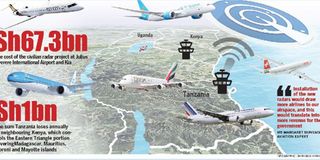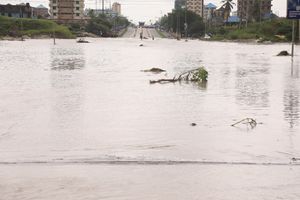What these new radars mean for Tanzania

Dar es Salaam. Tanzania will put its entire airspace under its control and enhance the safety and security of air transport as well as revenue collection after the commissioning of new radars at four of its airports.
They include Dar es Salaam’s Julius Nyerere International Airport (JNIA) and Kilimanjaro International Airport (Kia), where the government has been undertaking a Sh67.3 billion civilian radar project.
The project at JNIA and Kia has been completed successfully, according to information posted on the Tanzania Civil Aviation Authority (TCAA) website.
President John Magufuli is today expected to commission the JNIA radar.
Flight testing was conducted after the project contractor, Thales Air System (SAS) of France, completed the system installation and air traffic management system, according to TCAA director general Hamza Johari.
“We will soon commission the radars at JNIA and Kia,” he said.
Mr Johari said the radar at Mwanza Airport was at the testing stage, with commissioning scheduled for next month.
He added that installation work was going on at Songwe Airport in Mbeya Region, with testing and commissioning expected in November.
Currently, with the outdated radar installed at the Julius Nyerere International Airport (JNIA) in 2002, TCAA can monitor only 25 per cent of Tanzania’s aviation space.
This means that Tanzania loses Sh1 billion annually to neighbouring Kenya, which controls the Eastern Triangle portion covering Madagascar, Mauritius, Moroni and Mayotte islands.
“That will soon be a thing of the past. With four modern civilian radars, we will be able to control all our airspace and beyond,” Mr Johari said.
Aviation expert Margaret Munyagi said the new radars would help Tanzania retain airlines currently using its airspace and attract new ones.
“Installation of the new radars would draw more airlines to our airspace, and this would translate into more revenue for the government,” said Ms Munyagi, a former TCAA director general.
She added that unless airlines were assured that a particular country’s airspace was safe, carriers could opt to shift to other airspaces, thus denying that nation revenue.
Icao handed over to Kenya monitoring of the Eastern Triangle 41 years ago after it was established that Tanzania did not have the capacity to do so.
Tanzania has already written to Icao, requesting to be given the mandate to monitor a larger portion of the airspace.
Tanzania Air Operators Association (Taoa) executive secretary Lawrence Paul said the radar project had a number of benefits, including increasing airspace utilisation and safety enhancement.
It will also reduce the workload on aircraft controllers, and aircraft would fly at optimal altitudes, this reducing fuel burn.
“The decision to purchase four radars would make Tanzania’s airspace much safer and this would benefit both country and users of the airspace,” Mr Paul said.




